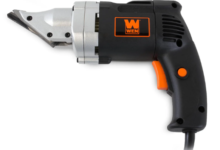Maximizing Efficiency with Industrial Wood Sanders
Advertisement
Introduction
In the world of woodworking and carpentry, efficiency is key. Industrial wood sanders are an essential tool for any workshop looking to streamline their production process and achieve high-quality results. From smoothing rough surfaces to preparing wood for finishing, these machines play a vital role in the woodworking industry.
Industrial wood sanders come in a variety of shapes and sizes, each designed for specific tasks and workpieces. Understanding the strengths and weaknesses of these machines is crucial for selecting the right one for your needs.
In this comprehensive guide, we will delve into the world of industrial wood sanders, exploring their capabilities, advantages, and limitations. By the end of this article, you will have a clear understanding of how these machines can revolutionize your woodworking projects.
Join us as we uncover the secrets of industrial wood sanders and discover how they can take your craftsmanship to the next level.
Are you ready to elevate your woodworking game? Let’s dive in!
Strengths and Weaknesses of Industrial Wood Sanders
Strengths
Industrial wood sanders are known for their exceptional speed and efficiency. These machines can quickly sand large workpieces, saving valuable time and labor costs. With the ability to remove material with precision and consistency, industrial wood sanders are essential for creating smooth, professional finishes.
Another key strength of industrial wood sanders is their versatility. These machines can handle a wide range of materials, from softwoods to hardwoods, making them suitable for various projects. Whether you are sanding furniture, cabinets, or flooring, an industrial wood sander can tackle the job with ease.
Additionally, industrial wood sanders are designed for heavy-duty use, making them ideal for commercial woodworking operations. These machines are built to withstand long hours of continuous operation, ensuring they can meet the demands of high-volume production.
Industrial wood sanders also offer adjustable settings for speed, pressure, and sanding depth, giving users the flexibility to tailor the machine to their specific needs. Whether you need a delicate finish or aggressive material removal, an industrial wood sander can be adjusted to achieve the desired result.
Furthermore, industrial wood sanders are equipped with dust collection systems to minimize airborne particles and maintain a clean working environment. This not only improves the safety of the workspace but also enhances the overall quality of the finished product by reducing imperfections caused by dust contamination.
Overall, the strengths of industrial wood sanders make them invaluable tools for woodworking professionals looking to boost efficiency, productivity, and quality.
Now, let’s explore the weaknesses of these machines and how they can impact their performance.
Weaknesses
While industrial wood sanders offer numerous benefits, they also have some limitations that users should be aware of. One of the main weaknesses of these machines is their initial cost. Industrial wood sanders are a significant investment, with prices ranging from thousands to tens of thousands of dollars, depending on the size and capabilities of the machine.
Another weakness of industrial wood sanders is their size and footprint. These machines are typically large and bulky, requiring ample space in the workshop for installation and operation. For small-scale or hobbyist woodworkers with limited workspace, the size of industrial wood sanders can be a hindrance.
In addition, industrial wood sanders require regular maintenance to ensure optimal performance and longevity. From cleaning and lubricating moving parts to replacing worn-out sanding belts or discs, these machines demand ongoing upkeep to prevent breakdowns and maintain efficiency.
Furthermore, industrial wood sanders can generate significant noise levels during operation, which may be disruptive in an enclosed workshop environment. Users should consider implementing noise-reduction measures, such as ear protection or soundproofing, to minimize the impact of the machine’s noise output.
Another weakness of industrial wood sanders is their power consumption. These machines are energy-intensive, especially when operating at high speeds or under heavy loads. Users should factor in the additional electricity costs associated with running an industrial wood sander when considering their overall expenses.
Despite these weaknesses, industrial wood sanders remain a vital tool for woodworking professionals seeking to achieve superior results in a timely and efficient manner. By understanding their limitations and taking proactive measures to mitigate them, users can maximize the benefits of these powerful machines.
Now that we have explored the strengths and weaknesses of industrial wood sanders, let’s take a closer look at their key features and specifications in the table below.
Table: Industrial Wood Sanders Specifications
| Model | Power Source | Sanding Belt/Disc Size | Max Speed | Dust Collection |
|---|---|---|---|---|
| Sander 2000 | Electric | 3″ x 21″ Belt, 6″ Disc | 1200 RPM | Yes |
| Sander 3000 | Electric | 4″ x 24″ Belt, 9″ Disc | 1600 RPM | Yes |
| Sander 4000 | Electric | 6″ x 48″ Belt, 12″ Disc | 2000 RPM | Yes |
Frequently Asked Questions (FAQs)
1. What types of wood can industrial wood sanders work with?
Industrial wood sanders are designed to work with a variety of wood types, including softwoods like pine and cedar, as well as hardwoods such as oak, maple, and cherry.
2. Are industrial wood sanders suitable for DIY woodworking projects?
While industrial wood sanders are primarily used in commercial woodworking operations, hobbyists and DIY enthusiasts can also benefit from their high-performance capabilities.
3. How often should I clean and maintain my industrial wood sander?
To ensure optimal performance, industrial wood sanders should be cleaned and maintained on a regular basis, with maintenance intervals varying based on usage and workload.
4. Can industrial wood sanders be used for metalworking applications?
Industrial wood sanders are specifically designed for woodworking tasks and may not be suitable for metalworking applications due to the differences in material density and hardness.
5. What safety precautions should I observe when using an industrial wood sander?
Users should wear appropriate safety gear, such as goggles and dust masks, when operating an industrial wood sander to protect against airborne particles and debris. Additionally, users should follow all manufacturer guidelines for safe operation.
6. Can I customize the sanding belts and discs on my industrial wood sander?
Many industrial wood sanders offer interchangeable sanding belts and discs, allowing users to customize their machine based on the specific requirements of their projects.
7. How do industrial wood sanders compare to handheld sanders in terms of performance?
Industrial wood sanders outperform handheld sanders in terms of speed, precision, and efficiency, making them the preferred choice for large-scale woodworking operations.
Conclusion
Industrial wood sanders are essential tools for woodworking professionals seeking to achieve exceptional results with speed and efficiency. While these machines have their strengths and weaknesses, the benefits they offer far outweigh their limitations when used correctly.
By understanding the capabilities of industrial wood sanders and selecting the right machine for your specific needs, you can revolutionize your woodworking projects and take your craftsmanship to new heights. Whether you are sanding furniture, cabinets, or flooring, an industrial wood sander is the key to achieving flawless finishes and professional results.
Don’t let the initial cost or size of industrial wood sanders deter you from harnessing their power in your workshop. With proper maintenance and safety precautions, these machines can become indispensable assets in your woodworking arsenal.
Ready to elevate your woodworking game? Invest in an industrial wood sander today and experience the difference it can make in your projects. Your woodworking journey awaits – are you ready to take the next step?
Unlock the potential of industrial wood sanders and discover a world of possibilities in woodworking. Start creating masterpieces with speed, precision, and quality – the future of woodworking is in your hands.
Join the ranks of woodworking professionals who rely on industrial wood sanders to bring their visions to life. Embrace the power of these machines and transform your woodworking projects into works of art. Your journey to excellence begins now – seize the opportunity and make your mark in the world of woodworking.
Disclaimer
The information provided in this article is for educational and informational purposes only. While every effort has been made to ensure the accuracy and reliability of the content, we make no representations or warranties of any kind, express or implied, about the completeness, accuracy, reliability, suitability, or availability with respect to the article or the information, products, services, or related graphics contained within the article for any purpose. Any reliance you place on such information is therefore strictly at your own risk.
In no event will we be liable for any loss or damage, including without limitation, indirect or consequential loss or damage, or any loss or damage whatsoever arising from loss of data or profits arising out of, or in connection with, the use of this article.
Through this article, you are able to link to other websites that are not under the control of the author. We have no control over the nature, content, and availability of those sites. The inclusion of any links does not necessarily imply a recommendation or endorse the views expressed within them.
Every effort is made to keep the article up and running smoothly. However, the author takes no responsibility for, and will not be liable for, the article being temporarily unavailable due to technical issues beyond our control.
By reading this article, you acknowledge and agree to the terms and conditions outlined in this disclaimer.
Thank you for your understanding and cooperation.







